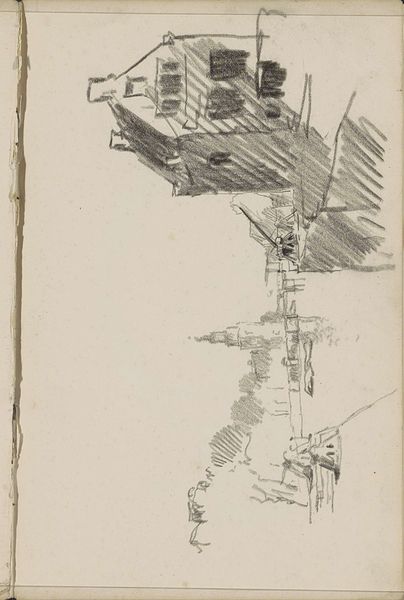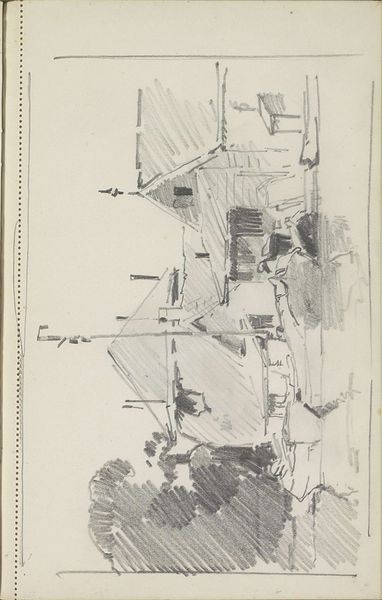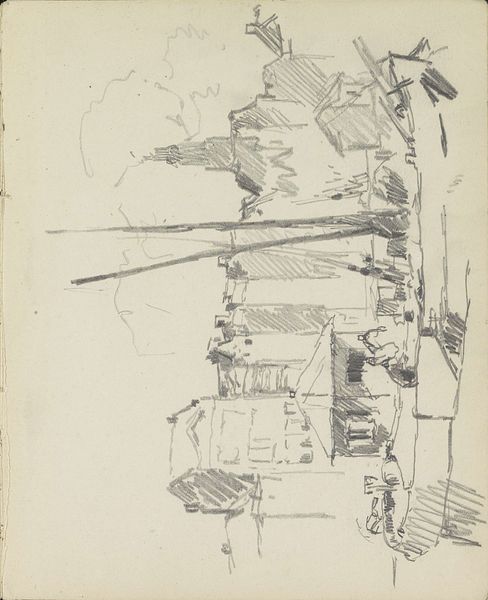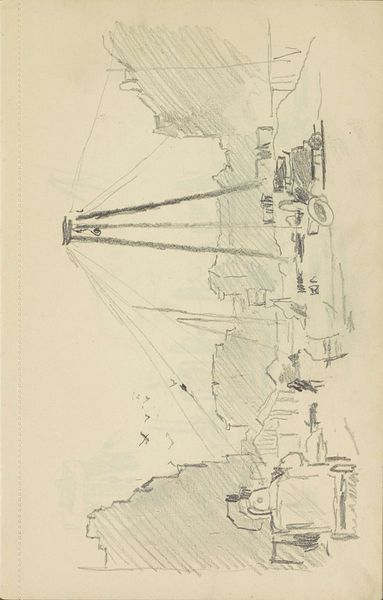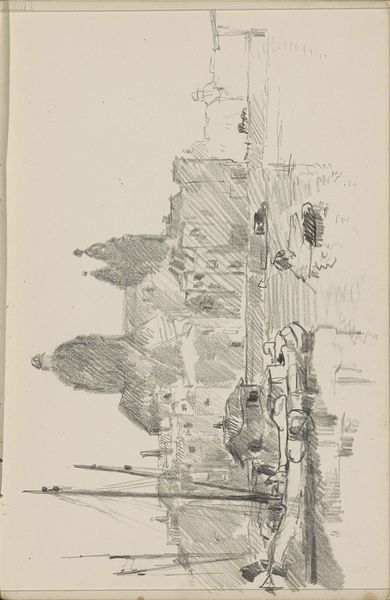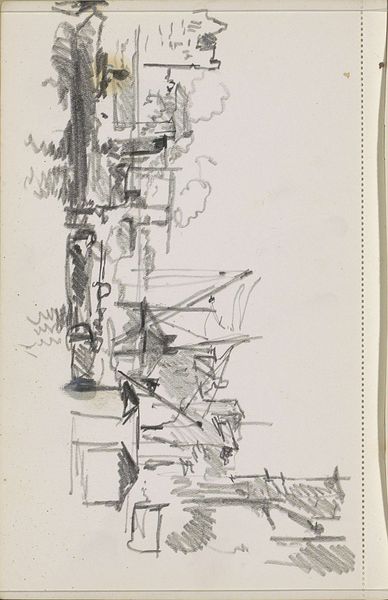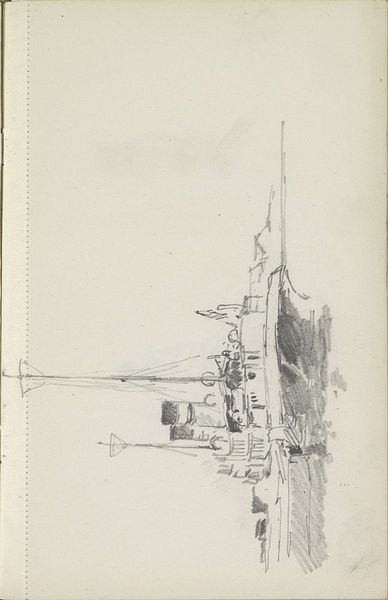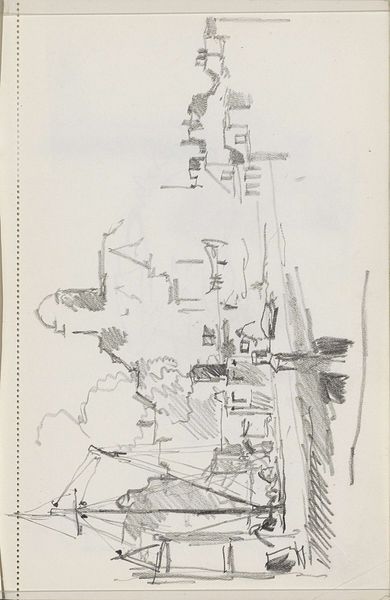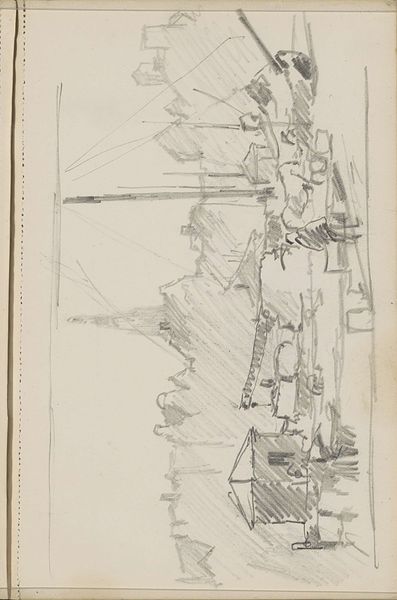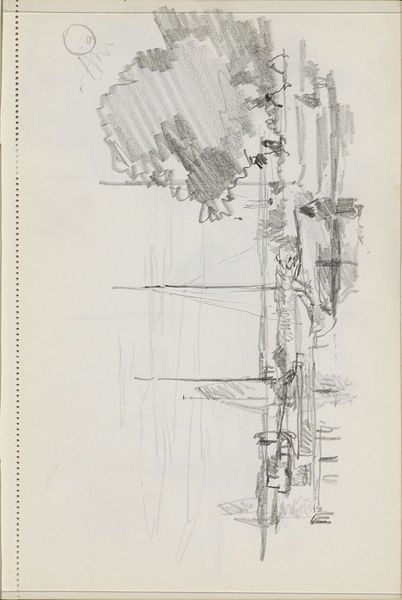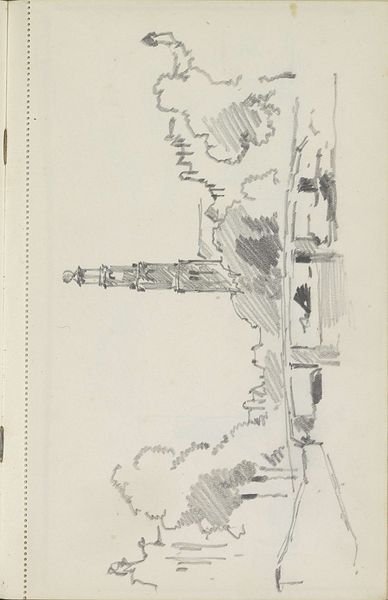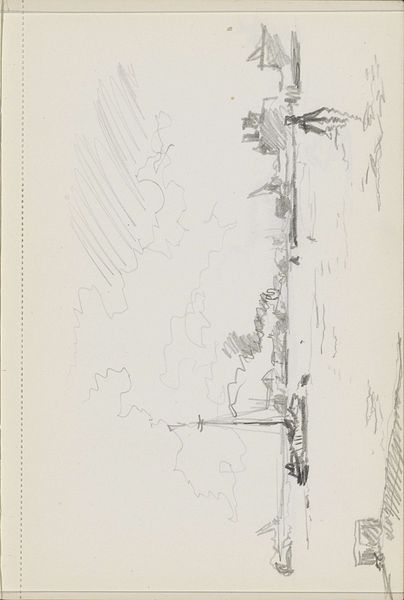
drawing, pencil
#
drawing
#
pen sketch
#
sketch book
#
landscape
#
personal sketchbook
#
idea generation sketch
#
sketchwork
#
ink drawing experimentation
#
pen-ink sketch
#
pencil
#
sketchbook drawing
#
cityscape
#
storyboard and sketchbook work
#
sketchbook art
#
realism
Copyright: Rijks Museum: Open Domain
Editor: So this pen and pencil drawing is called "Zeilboot bij een havenaanlegplaats" which roughly translates to "Sailboat at a Dock," by Cornelis Vreedenburgh. It's hard to pin down the exact year, somewhere between 1890 and 1946. It's at the Rijksmuseum now. It has a very immediate, sketch-like quality. What stands out to you? Curator: The immediacy you're noticing is key. For me, it’s all about the raw materiality. Look at the paper itself. This wasn't intended as a finished work; it’s a study, a moment captured. The labor of the artist is right there, the visible process of making, the repeated lines, the erasures. It's almost like looking at the artist's thought process directly related to the use of the materials at hand. Editor: That’s a great point. It’s less about the finished image of the sailboat and more about Vreedenburgh figuring things out. Does the lack of refinement detract from its value, though? Curator: Not at all. Think about the social context of art production. Traditionally, sketches like this were considered preparatory, secondary. But, from a materialist perspective, the sketch holds equal, perhaps even greater value, because it reveals the means of production. What kind of pencil did he use? How does the paper’s texture influence the mark-making? It brings 'craft' to 'high art,' it levels them. Editor: So you're saying the inherent 'value' of this resides in understanding not just the artwork, but the tools and the making? I never considered it that way before, always just saw sketches as leading *to* the real art. Curator: Precisely. We’re witnessing the artist engaging directly with his materials and, by extension, with the world around him. And that, for me, is where the real power of this piece resides. Editor: This really opens my eyes to the value we assign different stages of creating, as well as looking closely at those steps! Thanks.
Comments
No comments
Be the first to comment and join the conversation on the ultimate creative platform.
